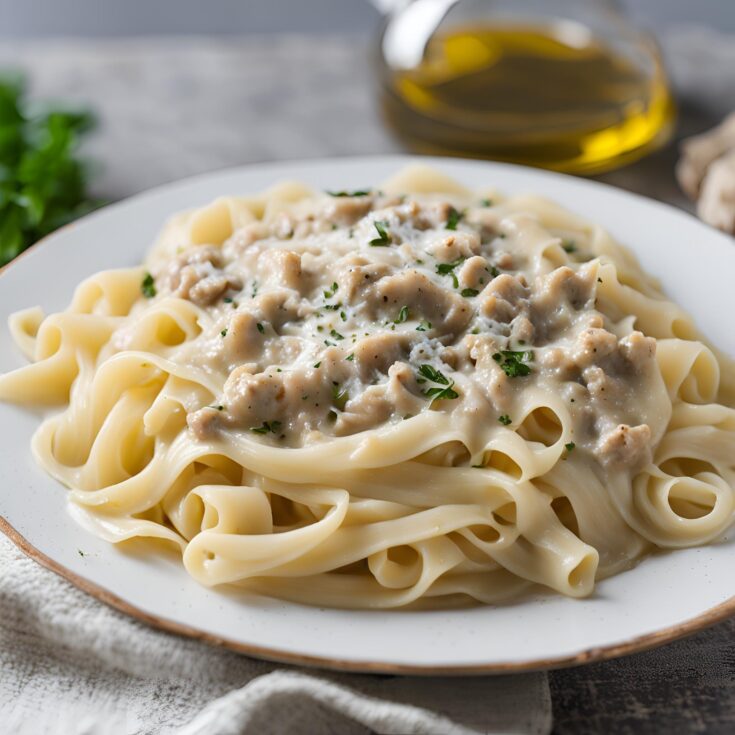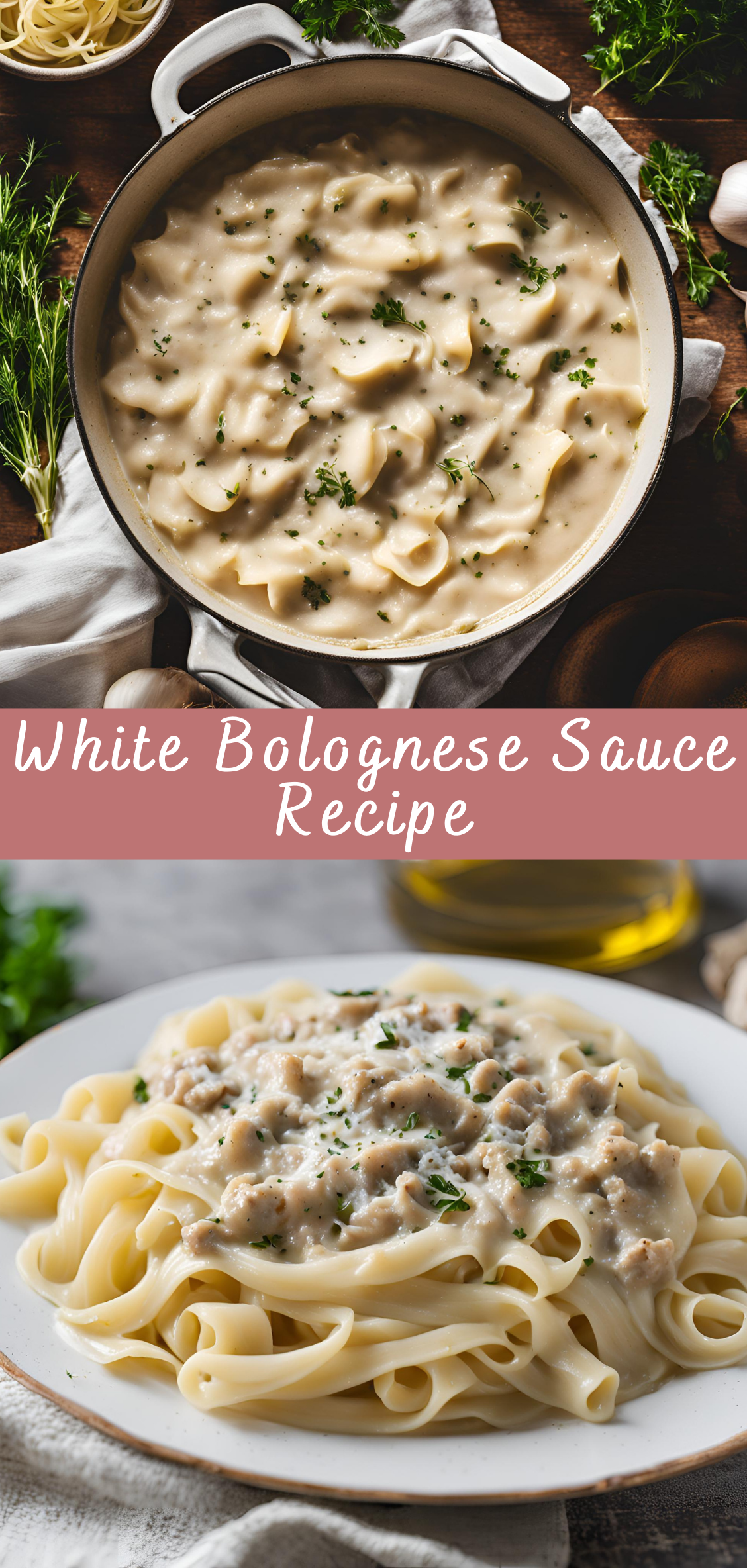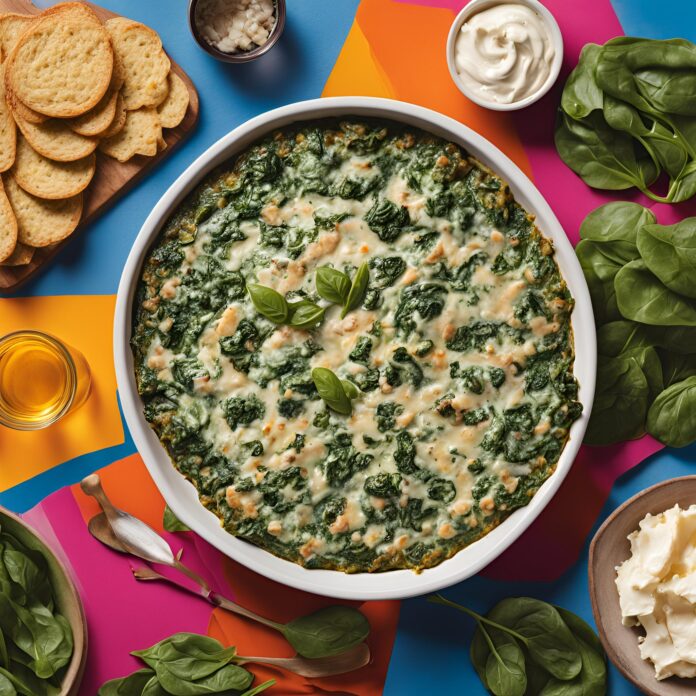White Bolognese Sauce Recipe
White Bolognese Sauce, or Ragù Bianco, is a luscious, comforting Italian sauce that takes the traditional Bolognese recipe and turns it on its head by omitting tomatoes in favor of cream, milk, or white wine. Originating from Northern Italy, this sauce is rich with flavors from a variety of meats, vegetables, herbs, and aromatic seasonings.

While the classic red Bolognese is a staple of Italian cuisine, the White Bolognese Sauce has its own special charm. It provides a more delicate, creamy base that allows the subtle flavors of the meat to shine through. This is a hearty sauce, ideal for winter nights or for a comforting dinner that will impress your guests. Whether you are making a big batch for a family meal or preparing a smaller quantity for a date night, this white version offers an irresistible depth of flavor.
In this recipe, you’ll learn how to make a traditional White Bolognese Sauce from scratch, starting with the proper selection of meats and vegetables, all the way to the final simmer. Whether you prefer a full-bodied, hearty sauce with a rich creaminess or a lighter, more delicate sauce, you’ll find a technique here that works for you.
The Science Behind White Bolognese Sauce
Understanding the science behind making a White Bolognese Sauce can help you achieve the perfect balance of flavors and textures. This sauce relies on a few key principles:
-
Sautéing Vegetables: The initial step of cooking the vegetables in fat (butter and olive oil) creates the foundation of flavor. This process, known as sweating or browning, caramelizes the natural sugars in the onions, carrots, and celery, which enhances their flavors and releases their sweetness into the sauce.
-
Browning the Meat: The meat is browned in stages, which is essential for developing Maillard reactions. This chemical process between amino acids and reducing sugars forms the complex flavors that contribute to the savory depth of the sauce.
-
Deglazing with Wine: Once the meat is browned, deglazing the pan with white wine lifts any caramelized bits from the bottom of the pan, incorporating those flavors back into the sauce. The wine also adds acidity to balance the richness of the meat and cream.
-
Simmering with Dairy: The key to the creamy texture of the white Bolognese is the slow simmering of milk or cream. Milk adds a mild, smooth texture, while cream thickens the sauce, creating a luxurious mouthfeel. As it simmers, the dairy absorbs the flavors of the meat and herbs.
-
Herbal Infusion: Herbs such as thyme and rosemary infuse their flavors during the simmering process, adding fragrance without overwhelming the sauce. They are removed before serving to avoid the bitterness of overcooked herbs.
Step-by-Step Instructions
Now that we’ve covered the ingredients and equipment, let’s dive into the step-by-step process for making the perfect White Bolognese Sauce.
Step 1: Preparing the Meat
-
Brown the Meat: Begin by heating a tablespoon each of butter and olive oil in your large pot over medium heat. Add the ground meat and break it up with a spoon. Let it brown for about 8–10 minutes, stirring occasionally. Ensure the meat gets nicely caramelized, as this adds deep flavor to the sauce.
-
Season the Meat: While the meat is cooking, season it with a pinch of salt and pepper. This enhances the meat’s natural flavors.
Step 2: Sautéing Vegetables and Aromatics
-
Add the Aromatics: Once the meat is browned, add the finely chopped onions, carrots, and celery (the classic soffritto) to the pot. Stir them into the meat and cook for 5-7 minutes, or until the vegetables are softened and slightly golden.
-
Add Garlic: Mince 2–3 cloves of garlic and add them to the pot. Stir and cook for an additional 1–2 minutes, being careful not to burn the garlic.
Step 3: Deglazing and Adding Liquids
-
Deglaze with White Wine: Pour in 1/2 cup of dry white wine, scraping the bottom of the pot to release any caramelized bits from the meat and vegetables. Let the wine cook for 2–3 minutes until it reduces slightly.
-
Add Dairy: Pour in 1 cup of milk (or heavy cream for a richer version) and stir well. The dairy will combine with the wine to create the creamy base of the sauce.
-
Season: Add a pinch of nutmeg, fresh thyme, a couple of bay leaves, and a sprig of rosemary to the pot. Stir to combine and allow the herbs to infuse into the sauce as it simmers.
Step 4: Simmering to Perfection
-
Simmer: Lower the heat to a gentle simmer and let the sauce cook uncovered for 45 minutes to 1 hour, stirring occasionally. The sauce should thicken and develop a deep, rich flavor. If the sauce gets too thick, you can add a little more milk or cream to reach your desired consistency.
-
Adjust Seasoning: Taste the sauce periodically and adjust the seasoning with salt, pepper, and additional nutmeg if needed.
Step 5: Finish and Serve
-
Remove the Herbs: Before serving, remove the bay leaves and sprigs of rosemary and thyme.
-
Add Parmesan: Stir in 1/2 cup of freshly grated Parmesan cheese to the sauce, adding richness and depth.
Tips and Tricks for a Perfect White Bolognese
- Cook Low and Slow: The key to developing deep flavor in a white Bolognese sauce is patience. Allow the sauce to simmer on low heat for a long period to let the flavors meld and the sauce thicken.
- Use Quality Meat: Using a combination of beef, pork, and veal provides the best texture and flavor, but you can also experiment with different cuts of meat like ground turkey or chicken for a lighter version.
- Adjust the Dairy: You can choose milk for a lighter sauce or heavy cream for a richer, more indulgent texture. Some recipes even use a combination of both.
- Make Ahead: This sauce improves in flavor as it sits, so consider making it a day or two ahead of time. Store it in an airtight container in the refrigerator and reheat gently on the stove.
- Serve with the Right Pasta: While this sauce is perfect with tagliatelle, pappardelle, or fettuccine, you can also serve it with other pasta shapes like rigatoni, or even use it as a filling for lasagna.
Serving Suggestions
- Classic Pasta Pairing: Serve the White Bolognese Sauce with your favorite long pasta, such as tagliatelle, pappardelle, or fettuccine. The sauce clings beautifully to these pasta shapes, creating a luxurious bite.
- Lasagna: Layer this rich white Bolognese sauce between sheets of pasta in a decadent lasagna for an indulgent dish.
- Gnocchi: The creamy sauce works beautifully with pillowy gnocchi, adding richness to every bite.
- Side Dishes: Pair this hearty sauce with a simple side salad or roasted vegetables to balance out the richness.
Variations on White Bolognese Sauce
- Vegetarian: Skip the meat and make a vegetarian version with hearty vegetables like mushrooms, zucchini, and eggplant, sautéed in butter and olive oil. Add lentils or chickpeas for protein.
- Spicy: Add a pinch of red pepper flakes or a finely chopped chili pepper to bring a little heat to the sauce.
- Mushroom White Bolognese: Add finely chopped mushrooms to the mix for an earthy, meaty texture that adds depth to the sauce.
Conclusion
Making White Bolognese Sauce is a rewarding culinary experience that brings together a harmonious blend of creamy dairy, rich meats, and fragrant herbs. It’s a perfect dish for special occasions, comforting family dinners, or any time you want to treat yourself to something indulgent and satisfying. The versatility of the sauce allows you to tailor it to your taste, experimenting with different meats, seasonings, and vegetables. With this detailed guide, you’ll be well on your way to creating a luscious, rich, and creamy sauce that will elevate any pasta dish to new heights.
White Bolognese Sauce Recipe

White Bolognese Sauce, or Ragù Bianco, is a luscious, comforting Italian sauce that takes the traditional Bolognese recipe and turns it on its head by omitting tomatoes in favor of cream, milk, or white wine. Originating from Northern Italy, this sauce is rich with flavors from a variety of meats, vegetables, herbs, and aromatic seasonings.
Ingredients
- 1 lb (450g) ground beef (or a mix of pork and beef for extra flavor)
- 1 small onion, finely chopped
- 2 cloves garlic, minced
- 1 medium carrot, finely grated
- 1 celery stalk, finely chopped
- 1 cup dry white wine
- 2 cups whole milk (or heavy cream for a richer sauce)
- 1/2 cup chicken or vegetable broth
- 2 tbsp olive oil or butter
- 1/2 tsp dried thyme (or fresh, chopped)
- 1/2 tsp dried oregano
- Salt and pepper, to taste
- 1/4 tsp nutmeg (optional, but adds warmth)
- Freshly grated Parmesan cheese (optional, for serving)
- Fresh herbs like parsley (optional, for garnish)
Instructions
- Cook the meat:
In a large skillet or Dutch oven, heat the olive oil or butter over medium-high heat.
Add the ground meat and cook until browned and cooked through, breaking it apart with a spoon as it cooks. Drain any excess fat and set the meat aside. - Sauté the vegetables:
In the same skillet, add the chopped onion, garlic, grated carrot, and celery. Cook for about 5-7 minutes, stirring occasionally, until the vegetables soften and begin to caramelize. - Deglaze with wine:
Pour in the white wine and stir, scraping any browned bits from the bottom of the pan. Let the wine cook down for 2-3 minutes, allowing the alcohol to evaporate. - Add the milk and broth:
Return the cooked meat to the pan and add the milk and broth. Stir to combine.
Season with thyme, oregano, salt, pepper, and nutmeg (if using). Bring to a gentle simmer. - Simmer the sauce:
Reduce the heat to low and simmer the sauce for 45 minutes to 1 hour, stirring occasionally. The sauce should thicken and become creamy. If it becomes too thick, you can add a little more milk or broth to reach your desired consistency. - Finish the sauce:
Once the sauce has thickened and developed flavor, taste and adjust seasoning with more salt, pepper, or herbs if needed. - Serve:
Serve the white Bolognese sauce over your favorite pasta (tagliatelle or pappardelle are great choices) or use it in lasagna.
Optionally, sprinkle with freshly grated Parmesan cheese and chopped parsley before serving.
Notes
- For a lighter version, you can use ground turkey or chicken instead of beef or pork.
- You can add a little splash of cream at the end for an even creamier sauce, but the milk is typically enough to make it rich.
- For extra flavor, you can add a small amount of finely chopped pancetta or bacon when sautéing the vegetables.
- This sauce can be made ahead of time and stored in the fridge for up to 3 days or frozen for up to 3 months.
- If you'd like a richer sauce, substitute some of the milk with heavy cream or add a dollop of ricotta when serving.



